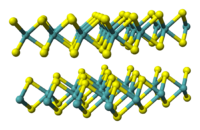Transistors hit a new benchmark for size
Transistors are semiconducting devices that are used to switch or amplify electric signals and power. They are made of a semiconductor part most commonly made from at the least three terminals for connecting to external circuits.

Transistors have 3 main components, the electricity in, out, and the gate. The gate is basically a switch that can be opened or closed depending on how much electricity is going through it and will either let the electricity go past or stop it. This is tremendously useful and allows for computers and phones to be what they are today.
Recently some of the best transistors on the market have been 20-nanometer ones, four times larger than the smallest possible, but people are trying to push the limit of 5-nanometers even farther.
For the longest time it was thought that transistors were only able to be 5-nanometers thick, so nobody looked into possibly smaller ones. A team of scientists and engineers got together and looked deeply into the problem. They came out of it finding that they could make the gates even smaller than 5-nanometers. All the way down to 1-nanometer! To put this into perspective, divide the width of a human hair by 50,000. That would be how big the 1-nanometer gate is.

How it works:
Most electronics have been made from a semiconductor called silicon. The lattice structure of silicon is made from
many silicon atoms neatly aligned. The structure, of course to maintain the shape has to be a certain thickness and it was predicted to be able to make a gate of just 5-nanometers. That changed when a the group of scientists and engineers decided to use other materials instead. The idea hadn't really been taken seriously because silicon had worked fine. But as Moore's law states, "The number of transistors per square inch on integrated circuits would double every year for the foreseeable future." The concept has held the test of time, though it has slowed down slightly, but has doubled about every 18 months. The trend expected to continue for almost two more decades. With the invention of the 1-nanometer transistor, Moor's law may live on further.

The material that the new transistor is made from is the same stuff that engine lubricant is made from, molybdenum disulfide shown with MoS2. Basically what the team did was make a transistor just like the silicon ones that are used today, and made a new one just with the new material. It was successfully shown to run like a switch, just like its partner silicon.
The reason that it works is because the electrons that go through the silicon transistors are lighter and come into contact with less things that cause resistance. MoS2 on the other hand has heavier electrons and runs into a different sort of issue. When you go bellow 5-nanometers, the distances are so small that quantum mechanics come into play. The electrons take part in a stunning quantum effect called quantum tunneling. The electrons then are able to pass through the barrier as if it weren't even there at all. These electrons have been called by the people working on the project "put of control electrons" and for good reason.

The electrons in the MoS2 are heavier allowing smaller gates but also allow for quantum tunneling to occur. The quantum tunneling can be countered by controlling the electrons better by making the gate smaller in fact. Down to nearly .65-nanometers which at that point causes a lower dielectric constant, which is a measurement of the ability for the material to store energy in an electric field. With that and the heavier elecronns it allows for a gate smaller than 1-nanometer.
It was tested using the 1-nanometer gate that 5-nanometers is not the smallest a transistor can go. All that is left is for the technology to be improved and tested more to allow for it to be sued in circuits. Hopefully this breakthrough will keep Moor's law going for quite a while longer.
Sources:
upload.wikimedia.org/wikipedia/commons/thumb/f/f4/Diagrama_de_Transistor_NPN.svg/2000px-Diagrama_de_Transistor_NPN.svg.png
pixabay.com/static/uploads/photo/2012/04/13/11/32/transistor-31987_960_720.png


phys.org/news/2016-10-materials-smallest-transistor-nanometer-carbon.html
I do not understand that statement. The electron mass is 511 keV. That's it. There is not such things like lighter or heavier electrons. Could you please specify? I have found the same information on the source, and it is equally wrong ;)
Thanks in advance!
This may help: http://phys.org/news/2012-06-mass-scientists-electrons-heavy-speedy.html
Yes it does. Thanks. Actually, the electrons behave as if they where heavier. The 'as if' has is own importance in the sentence. Quantum effects yield them to get an effective mass that is heavier. This is different from the electron mass which is of course constant.
PS: maybe could you consider updating slightly this paragraph of your post?